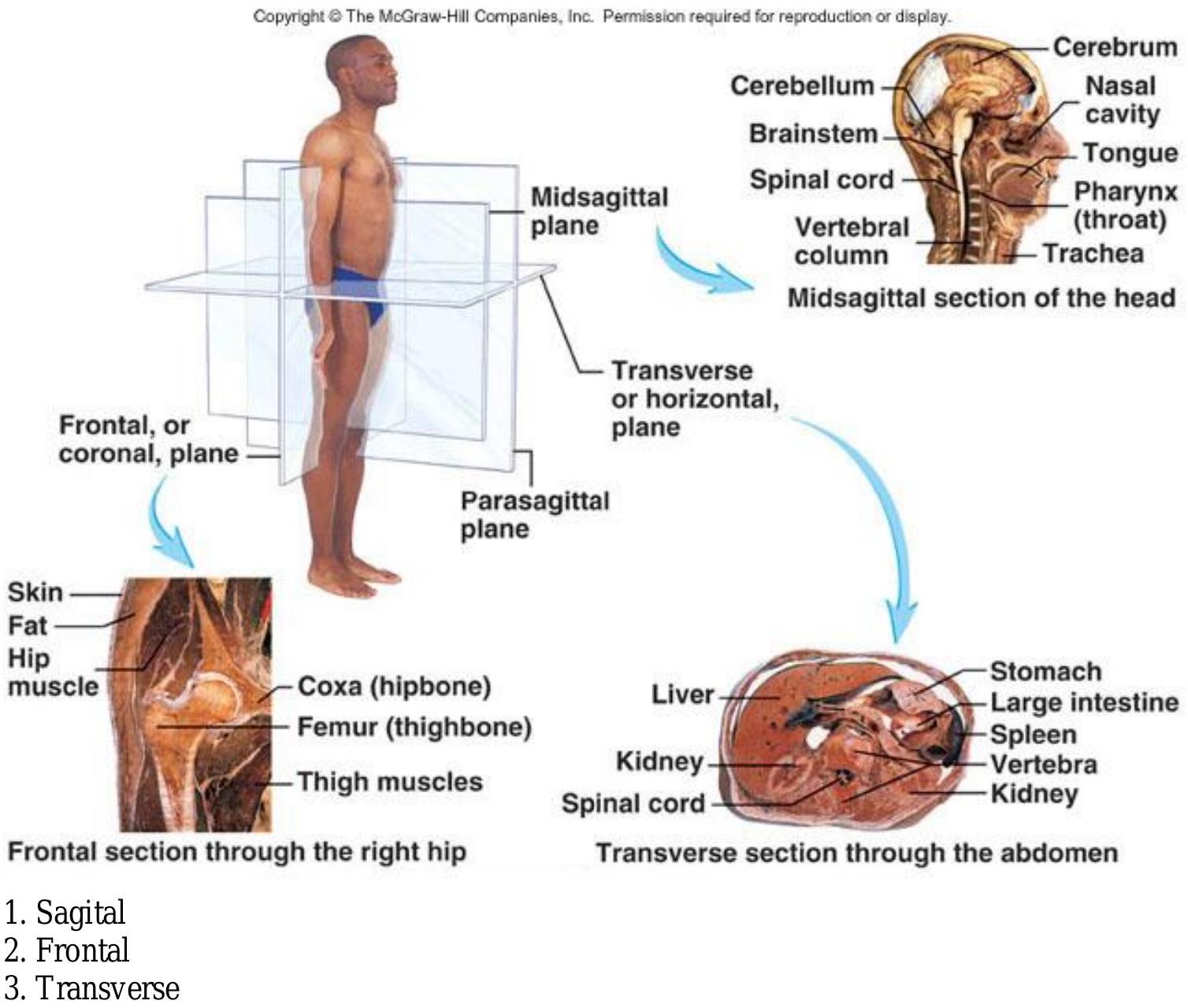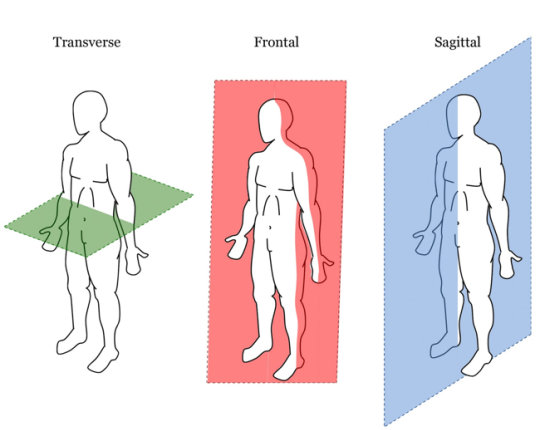A&P: Anatomical Organization
FALL SEMESTER 2024
Instructor: Anthony Uzwiak
uzwiak@dls.rutgers.edu

What are Anatomy and Physiology?
Anatomy and physiology explore the relationship between structure (anatomy) and function (physiology).
Topics included:
Compare and contrast the study of anatomy and physiology
Describe the structure of the body, from the molecular to the organismal
Describe the characteristics of life
Describe homeostasis, elements of a homeostatic system, and the types of feedback control
Use appropriate anatomical terminology for body regions, structures, planes, and positions
Describe internal body cavities and membrane

Overview of Anatomy
Anatomy— study of the structure of body parts and their relationship to one another
Anatomy studies the relationship between the structure of a body and its function. There are two types of anatomy: gross, microscopic, and developmental.
— Gross anatomy can be studied without a microscope approached systematically or regionally.
In systemic anatomy, the body is analyzed by system to system.
In regional anatomy, the body is analyzed by area to area.
Surface anatomy involves looking at the exterior of the body to visualize structures deeper inside the body. Anatomical imaging uses technologies (MRI, ultrasound) to create pictures of internal structures. |
— Microscopic anatomy involves looking at the body using a microscope. This is because some structures, such as cells, are too small to be seen with the naked eye. Microscopic can be broken down to cytology or histology.
Cytology examines the structural features of cells.
Histology examines tissues.
— Developmental anatomy studies the structural changes that occur between conception and adulthood. A special subsection of this is embryology, which observes changes from conception to the eight week of development.
Overview of Physiology
Physiology— study of the function of the body’s machinery; need to understand anatomy to understand physiology
The type of physiology is based on organs. Similarly to anatomy, the function of an organ reflects its structure. There are two major goals when it comes to studying physiology.
Examining the body’s response to stimuli
Examining the body’s maintenance of stable internal conditions within a narrow range of values in a constantly changing environment
Physiology, like anatomy, is split up into different types. These types include cell physiology and systemic physiology.
Cell physiology examines the process occurring in cells (like energy from food).
Systemic physiology considers the functions of organ systems. For example—
Cardiovascular physiology focuses on the heart and blood cells.
Neurophysiology focuses on the function of the nerve system.
Physiology often examines systems instead of areas because a particular function can involve more systems in a different region. (i.e; signals to move your fingers involve your hands, arms, and fingers as signals move) |

Organization of the Human Body
The body has six levels of organization: chemical, cellular, tissue, organ, organ system, and organismal.
Chemical
Structure and function are determined by chemical makeup
A molecule’s structure determines its function
Cells
Cells are the most basic unit of life– basic structural and functional unit that makes up all living organisms
Contain organelles which carry out particular functions within the cell
Tissue
Tissues contain similar cells with similar function
Four types of tissue
Epithelial
Connective
Muscle
Nervous
Organ
Structure with two or more tissue types
Perform one or more common functions
Organ system level
Group of organs that perform a common function or set of functions
Viewed as a unit
Organismal
An organism is any living whole being
Sum of all structural levels working in unison to promote life
Could be one cell, or a human

Maintaining Life
Every living organism must contain eight* functions in order to be considered alive.
Necessary life functions
Boundaries
Every cell in the body is surrounded by a plasma membrane; everything within it is alive
Prime mechanism to destroy living organisms is to destroy the membrane
Movement
Being able to move to a safer environment
Moving to a place to acquire more resources (food, water, supplies)
Access to successful reproduction
Responsiveness
An organism’s ability to sense changes in its external or internal environment and adjust to those changes
Digestion
Ability to break down energy to be used by the cells to function
Metabolism
Ability to use energy (after digestion) to perform other vital functions
Excretion
Getting rid of toxic waste within the body
Reproduction
Formation of new cells/organisms
No life is perpetual— some percentage of the population of a species has to reproduce successfully to continue species
Not everyone has to do it to be a successful species
Growth
Refers to an increase in the size or number of cells
The tissue in your body will remodel over and over again
Adapt to the conditions being applied to the body
***the textbook lists six but Anthony’s notes have eight but since he’s the goat of all time I’m just writing down eight :x |
Regulation of Bodily Activity
Homeostasis— ability to maintain stable internal conditions. It is the process by which body variables are returned to their set ranges.
Body variables (factor or event being controlled) are maintained within very narrow ranges. Set point is the normal physiological range/variable: however, that variable may deviate and leave the set range (elevated or decreased). I.e, high glucose levels.
Most body organs work together to maintain a set range. This is primarily achieved by the endocrine and nervous function.
Require a receptor to detect the change, a control center to relay information to the effector, and an effector to return the change to its range.
This is called a “feedback system”.
Feedback system
Receptor Control Center Effector |
An increase/decrease is detected within the variable. Control center responds to the information from the receptor. Activity of an effector changes, returning variable to range. |
There are positive and negative feedback systems.
Negative feedback decreases stimulus.
More common
Positive feedback increases stimulus.
Not as common as negative feedback
Do not require constant adjustment

Anatomical Terminology
Anatomical position refers to a person standing erect with the face directed forward, the upper limbs hanging to the sides, and the palms of the hands facing forward.
General Terms
Superior— above
Inferior— below
Anterior— in front of
Posterior— behind
Medial— toward the midline of the body
Lateral— away from the midline of the body
Intermediate— between two structures
Proximal— closer to the point of attachment
Distal—farther from the point of attachment
Superficial— toward the surface
Deep— away from the surface
Antecubital: anterior side of elbow
Axillary: armpit
Brachial: upper arm
Buccal: cheek
Calcaneal: heel
Carpal: wrist
Cephalic: head
Cervical: neck and cervix
Coxal: fusion of ilium (hips), ischium (hip and pelvic), and pubis (pelvic area)
Digital: fingers and toes
Femur: thigh
Gluteal: butt
Lumbar: lower back
Inguinal: groin
Occipital: back of the head
Olecranal: point of elbow
Oral: mouth
Orbital: eye socket
Patella: knee cap
Sacral: related to the sacrum (tailbone)
Tarsal: ankle
Vertebral: spine
Umbilical: around the belly button
Regional Terms
The axial region (main axis) is the central region of the body. This consists of the head, neck, and trunk. This can be further broken down into the thoracic, abdominal, and pelvis.
The abdomen is split up into four quadrants. RU (right upper), RL (right lower), LU (left upper), and LL (left lower). This is further broken down into nine different regions, right hypochondriac, right lumbar right iliad, epigastric, umbilical, hypogastric, left hypochondriac, left lumbar, and left iliac. |
The appendicular region (appendages) consists of the limbs. That includes your arms and your legs.
Body Planes
Body planes cut the body in different directions for anatomical studies. There are four different planes.
Sagittal plane separates the body into right and left halves.
Median/midsagittal splits the body right in the middle into equal right and left halves.
Frontal plane splits the body into anterior (front) and posterior (back) halves.
Transverse plane cuts the body into superior (upper) and inferior (lower) halves. (Runs horizontally)
|
Body Cavities
There are two main body cavities: dorsal and ventral.
The dorsal cavity contains the cranial and vertebral cavity.
The cranial cavity contains the brain.
The vertebral cavity contains the spinal cord.
The ventral cavity is larger and is divided into two main parts, thoracic and abdominopelvic.
Thoracic cavity contains the heart and lungs.
Pleural cavities: Each cavity surrounds a lung.
Mediastinum: Central component that encases the heart, trachea, esophagus, and major blood vessels.
Abdominopelvic cavity contains other organs.
Abdominal cavity contains the liver, stomach, and intestines.
Pelvic cavity contains the bladder, rectum, and reproductive organs.
Abdomen and pelvis are separated by the diaphragm. Organs of the abdominopelvic cavity are housed in the peritoneal cavity. |
Membranes
Each cavity is lined with double-layered serous membranes. Membranes help reduce friction against walls in order to facilitate movement.
Parietal Serosa: Lines the cavity wall.
Visceral Serosa: Covers the organs within the cavity.

